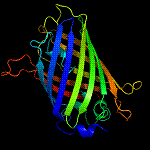Researchers recently found that they were able to erase specific memories in rats. Really. They tell all about it in the current issue of the journal Neuron.
By blocking the enzyme alpha-CaMKII (which is a kinase) in neurons of the brain, the researchers were able to completely block recall of mild electric shocks given when a certain piece of music was played. Apparently, this specific kinase performs a critical step in recalling memory.
It's just the beginning of a road that may lead to the ability to therapeutically erase traumatic memories in individuals who suffer post-traumatic pathologies. Or it might not. But it's an interesting development, nonetheless.
Even more likely, however, is the possibility that this research pathway will lead us to a clearer understanding of how memories are formed and recalled.
Want to know more? Check out these resources:
[Brief article that summarizes the research and its implications]
Inducible and Selective Erasure of Memories in the Mouse Brain via Chemical-Genetic Manipulation
Neuron, Volume 60, Issue 2, 353-366, 23 October 2008
doi:10.1016/j.neuron.2008.08.027
Xiaohua Cao, et al.
[The original research article in the journal Neuron; free brief summary]
Requirement for
S. Glazewski et al.
Science 19 April 1996: Vol. 272. no. 5260, pp. 421 - 423
DOI: 10.1126/science.272.5260.421
[Journal article showing related functions for this enzyme]
You may want to go back and look at my recent article on memory at The A&P Professor blog.



